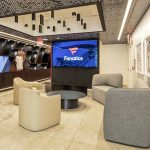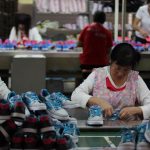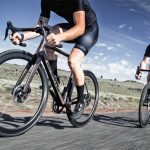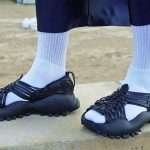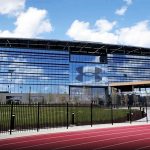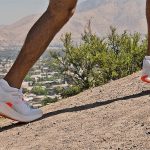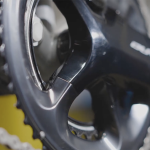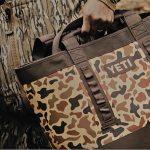 Puma's second-quarter profit rose 16.4%. Revenue rose 2.5%, boosted by sales in the Americas, which advanced 26%. Puma's second-quarter profit rose 16.4%. Revenue rose 2.5%, boosted by sales in the Americas, which advanced 26%. With a “strong outlook” for the second half, management continues to expect sales growth in the low to mid single-digits for the full year.
Puma's second-quarter profit rose 16.4%. Revenue rose 2.5%, boosted by sales in the Americas, which advanced 26%. Puma's second-quarter profit rose 16.4%. Revenue rose 2.5%, boosted by sales in the Americas, which advanced 26%. With a “strong outlook” for the second half, management continues to expect sales growth in the low to mid single-digits for the full year.
Jochen Zeitz, CEO, said, “PUMA performed according to plan in the second quarter and we are gearing up for solid growth in the second half of the year based on a strong outlook. Given an overall improvement of the global economies as well as our decisive measures taken in the past 18 months to adjust our organization and processes to the new market realities, we feel ready to re-engage with our long-term expansion plan as of next year. “Phase IV revisited 2011-2015″ shall enable us to significantly tap into PUMA's long-term sales potential of 4 billion Euros and beyond.”
Sales and Earnings Development
Global Brand Sales
PUMA's brand sales in the second quarter – comprised of consolidated and license sales – increased by 1.3% in Euro terms.
Consolidated Sales
Consolidated sales in the second quarter increased by 2.5% in Euro terms to â¬615.4 million ($787.7mm). Currency neutral, consolidated sales softened by 4.8% on high comparables after closeout sales and a high inventory availability last year. Deliveries in June were impacted by late product deliveries and there were no pre-shipments unlike last year.
On a currency-neutral basis, Footwear sales were down by 9.7% at â¬321.2 million ($410.9mm) Apparel sales fell by 5.3% to â¬208.6 million ($2.67mm). Due to first time consolidations, Accessories sales improved significantly by 20.6% to â¬85.6 million ($109.6mm). On an actual basis, sales were down 2.7% in Footwear, up 2.3% in Apparel and climbed 28.9% in Accessories.
By region, sales in the EMEA slid 7.2% to â¬267.6 million ($342.5mm) and were down 10.7% on a currency-neutral basis. Sales in the Americas grew 26.1% to â¬212.6 million ($272.1mm) and gained 15.4% on a currency-neutral basis. Asia Pacific's sales were down 5.7% to â¬135.2 million ($173.1mm) and declined 17% on a currency-neutral basis.
After the first six months, consolidated sales were down by 3.7% currency-neutral but increased by 0.1% in reported terms to â¬1,298.5 million ($1.66bn). Sales in EMEA and Asia/Pacific were below last year's levels. Sales in the Americas region, however, increased 12.7% currency-neutral despite of the overall challenging market environment after both sub regions – North America and Latin America – sustained their positive performances from the first quarter. Footwear sales declined currency-neutral by 7.2% to â¬700.1 million ($896.1mm). Apparel sales decreased by 2.0% to â¬435.4 million ($557.3mm). Accessories sales, however, advanced by 8.9% to â¬163.1 million ($208.8mm).
Gross Profit Margin
In the second quarter, the gross profit margin improved by 30 basis points from 50.0% last year to 50.3%. This increase mainly results from a lower share of closeout sales that more than offset negative impacts from currency hedging, the regional mix and higher raw material costs. After the first six months, PUMA's gross profit margin reached 51.3% after 51.1% last year. Footwear reported 50.6% compared to 49.7% and Apparel 52.7% versus 52.3%. Accessories declined to 50.7% from 54.9% last year, which is mainly due to the increase in the scope of consolidation with the inclusion of Cobra Golf.
Operating Expenses
Operating expenses increased by 3.4% to â¬250.5 million ($320.6mm) in the second quarter due to the inclusion of the Cobra Golf business into the consolidation as well as currency effects. Omitting these two factors, OPEX would be below last year. In the first six months operating expenses declined by 0.7% to â¬492.8 million ($630.8mm), which translates into a cost ratio of 37.9% after 38.2%. 2
EBIT
The operating result came in at â¬64.1 million ($82mm) in the quarter after â¬63.1 million last year. As a percentage of sales, the EBIT ratio dropped slightly to 10.4% from 10.5%. Adjusted by costs stemming from the Cobra integration, the EBIT margin would have improved compared to last year.
After six months, the operating result before special items increased by 3.4% to â¬183.2 million ($226.7mm) from â¬177.1 million, which translates into an operating margin of 14.1% versus 13.6% last year.
Financial Result/Income from associated companies
Due to lower interest rates and lower accumulation of interest on purchase price liabilities from acquisitions, the financial result in the second quarter was at â¬-1.5 million (-$1.92mm) versus â¬-2.1 million last year. After six months, the financial result stood at â¬-2.7 million (-$3.5mm) compared to â¬-3.7 million last year. An income of â¬0.4 million was generated from associated companies in the quarter.
Net Earnings
The company's pre-tax profit (EBT) was â¬63.1 million in the second quarter versus â¬61.0 million last year. Net earnings totaled â¬44.8 million versus â¬38.5 million, representing an increase of 16.4%. This translates into earnings per share of â¬2.97 compared to â¬2.55 last year.
In the first half, EBT rose significantly to â¬180.9 million from â¬63.4 million last year. As a result, net earnings improved by 190.4% to â¬127.9 million ($163.7mm) from â¬44.0 million. Earnings per share were at â¬8.48 compared to â¬2.92. The operational tax ratio was calculated at 29.3% versus last year's 26.5%.
Net Assets and Financial Position
Equity
As of June 30, 2010, total assets were up by 16.1% to â¬2,377.6 million ($2.99bn.) The equity ratio improved from 56.6% in last year to 61.7% in spite of a higher balance sheet total.
Working Capital
Net inventory increased by 5.7% to â¬456.8 million ($587mm) but decreased 5.7% on a currency-adjusted basis. Accounts receivable increased by 8.1% from â¬502.8 million to â¬543.4 million ($695.5mm), which compares to a currency-adjusted decrease of 0.7%. Working capital improved to â¬521.7 million ($667.8mm) from â¬540.6 million last year – showing again a significant improvement compared to previous quarters and thus underpinning our strong focus on managing working capital.
Capex/Cashflow
In the first six months, the company invested â¬23.3 million ($29.8mm) versus â¬27.4 million last year. The reduction in capital expenditure together with a solid improvement in working capital led to a strong increase in PUMA's free cashflow before acquisitions of â¬77.3 million ($98.9mm) from â¬45.1 million last year. An outflow of â¬101.9 million ($130.4mm) versus â¬61.0 million last year related to acquisitions.
Cash Position
Given the strong focus on cash management, total cash at the end of June rose by 49.8% from â¬302.7 million to â¬453.4 million ($580.4mm) and bank debts declined by 28.8% from â¬44.8 million to â¬31.9 million ($40.8mm) this year. As a result, net cash was up from â¬257.9 million to â¬421.5 million ($539.5mm) this year, representing a remarkable increase of 63.4%.
Share Repurchase
PUMA AG started its share buyback program and purchased 55,892 of its own shares during the second quarter, which equals 0.4% of the share capital and reflects an investment of â¬12.9 million.
Other Events
Spain Arbitration Ruling
According to an arbitration ruling the former Spanish license holder Estudio 2000 S.A., which owned several PUMA trademark rights, has been obliged to vest these to PUMA AG. Through the vesting of all of the word, image and combined PUMA trademark rights in Spain, PUMA AG would ultimately own all trademark rights and take over the operational business in Spain, hence ensuring a consistent brand management strategy. According to the arbitration ruling, the vesting of the trademark rights is subject to a one-time payment of up to 98 million Euros to Estudio 2000 S.A. However, after a thorough legal assessment, PUMA AG will challenge the ruling and believes that a favourable outcome is more likely than not. PUMA now confirms that a cancellation recourse will be filed within the next days. This potential is classified as a contingent liability which has not been recognized as a liability in the financial statements.
PHASE IV Revisited (2011-2015) – New refined strategy to unfold PUMA's long-term potential
PUMA's initial Phase IV expansion plan was slowed down by the global economic crisis that curbed PUMA's sales progress. With an improved outlook of the global economy, which should lead to a reasonable market recovery, PUMA's management is revisiting its long term development plan, leading to a refined strategy, aligned with today's market realities, to unfold PUMA's long-term potential. The strategy and impact of “Phase IV Revisited 2011-2015” will be laid out in detail – together with the release of PUMA's third quarter results – on October 26th at the Brand Center of PUMAVision Headquarters in Herzogenaurach, Germany.
Outlook 2010
Given a strong outlook in sales for the second half, we continue to expect sales growth in the low to mid single digits for the full year 2010. Gross profit margins should remain unchanged to last year's level. EBIT before special items is expected to improve compared to last year.


